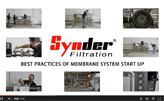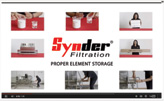Membrane Fouling
Membrane fouling is characterized by the accumulation of feed stream components onto the surface of or within the pores of a membrane, resulting in an increase in hydraulic resistance and accompanied by a decrease in permeate flux. There are several different means by which fouling can occur. Static membrane fouling can take place in the absence of a permeate flux and occurs due to the adsorption of feed components onto the membrane itself, which is driven by both physical and chemical interactions. Dynamic membrane fouling, on the other hand, occurs when a permeate flux is generated and occurs through one or more mechanisms. One of these is through the partial or full pore blockage caused by the accumulation of foulants within the pores of a membrane. Another is through the development of a cake layer via the continuous deposition of feed particulates on the membrane surface. Similarly, a gel layer may form near the membrane surface depending on the extent of concentration polarization. Membrane fouling can be characterized as reversible or irreversible depending on both the extent and type of fouling observed.CASE STUDY
Applications
Resources
MEMBRANE RESOURCES
- Definition of a Membrane
- Membrane Materials: Organic vs. Inorganic
- Pressure-Driven Membrane Filtration Processes
- Concentration Polarization in Pressure-Driven Processes
- Degrees of Membrane Separation
- Flux Behavior in Membrane Processes
Module Configurations & Processes
-> View all membrane resourcesTUTORIALS









